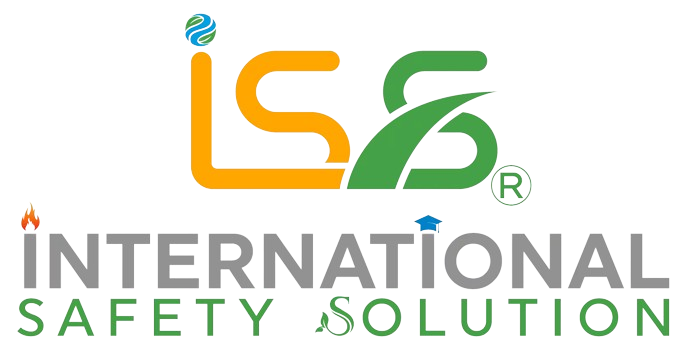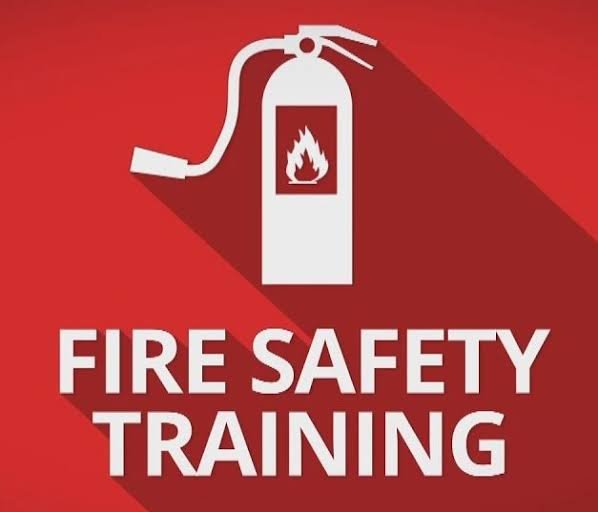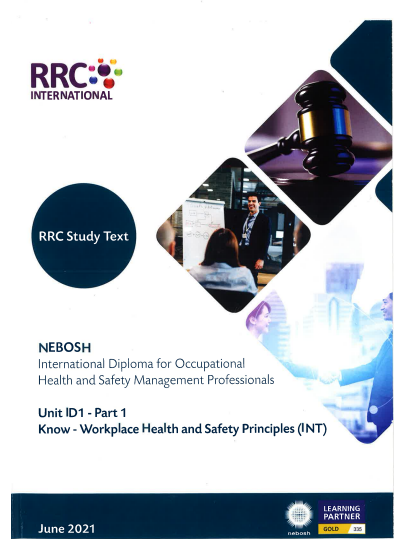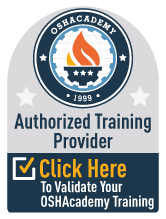Discover the newest NEBOSH past paper in our blog, a crucial asset for excelling in occupational health and safety exams. Elevate your preparation with the latest official material. To view nebosh past paper
Nebosh Paper Solution 6th September 2023
Task 1: Understanding moral management of health and safety in the
workplace
Question 1
Every employer has a moral obligation to eliminate or reduce the pain and suffering of
the workers and provide a safe place of work, safe equipment and machinery.
- LAck of Training. As we saw in the scenario that the workers were not given
proper training about their work. - Neglecting Employee Well Being. As we saw in the scenario that the WM was
shouting at the worker for staying ahead of schedule without caring for the
worker’s mental health. - Poor communication. The WM was not keen on talking or having a meeting with
the workers to discuss and address safety concerns. - Ignoring Employee Concerns. Employees repeatedly expresses concerns about
safety and workload issues but their concerns are ignored by the WM. - Lack Of Safety representatives. There was no health and safety officer at the
warehouse to enforce and represent health and safety issues. - Lack of empathy or compassion. The WM insensitivity towards the FLT driver,
making derogatory comments about their absence from the meeting,
demonstrates the lack of empathy and compassion for the workers well being. - Resistance to Workers Input. The WM resists worker-demanded meetings and
blame the FLT driver for the entire accident, which shows a lack willingness to
engage in constructive dialogue and address employee concerns. - Delay in safety repairs. The WM constantly cancels necessary safety repairs, like
repainting traffic route lines, to avoid potential work delays, which shows a clear
disregard for safety in favour of money. - Prioritise speed over safety. The WM focus on maintaining a reputation for
keeping the warehouse ahead of schedule indicates a disregard for employee
well being and a preference of productivity over safety. - Blame culture. The WM blames the FLt driver for the accident without knowing
the root causes of the accident, which discourages open reporting of near misses
and incidents, which is critical for improving safety. - Lack of Safety Measures. The warehouse lacks proper safety measures such as
the absence of painted traffic lines on the floor, which are essential for separating
the pedestrian and FLT routes, which shows a disregard for safety measures and
employee well being. - UNclear Safety Responsibilities. The absence of a safety professional in the
warehouse, that they have been trying to fill that position for “years” shows a lack
of commitment to safety. - Missing First-Aid Facilities. The absence of a visible reception area or a first aid
box raises questions about the availability of immediate medical assistance in
case of emergency. - Lack of proper induction. The worker was not given comprehensive induction
on his first day, he was rushed through the process and left to watch outdated
VHS video tapes, this lack of thorough training is a major concern for safety. - Lack of communication and Engagement. The Wm reaction to the workerdemanded meeting shows a lack of willingness to engage with workers’ concerns
and suggest an adversarial relation between management and workers.
Task 2: Determining what is effective about induction training
Question 2
Based on the scenario, the induction training at the warehouse has several effective
aspects.
- Structured content. The induction training organised into specific parts, covering
essential topics such as fire safety, manual handling and emergency procedure.
this ensures that new employees gain comprehensive knowledge. - Using videos based training. Using videos as the source of information allows
consistency. employees can watch and learn in their own way, making sure that
important safety information is conveyed effectively. - Clarity on emergency procedures. The “what to do in an emergency” tape
informs the workers about the location of the first aid box in the reception and
shows the importance of reporting accidents or incidents. which shows the
workers what is the emergency procedure and where are the resources available
in case of emergency. - Safety Equipment. After the induction the workers are given PPEs like visibility
vest, hard hat and gloves which are must in a warehouse environment. which
shows commitment to providing the necessary safety Gear. - Clear Communication. The induction training provides important information to
the workers, such as the location of fire exits, the existence of personal pager
policy, and the need to report accidents and near misses. This helps ensure that
new workers are aware of the basic procedures. - Lack of practical training. The scenario does not mention any hands on training
for workers especially for the FLT drivers. Practical training is crucial and
essential in a warehouse setting. to ensure that workers can perform their task
safely and effectively. - Incomplete information. The induction does not give crucial information about the
location of the first aid box and reception area. This lack of information can be a
safety concern. as workers may not know where to find the necessary resources. - In summary, while the induction training has some good aspects. it also has
shortcomings like outdated information and the absence of safety personnel, a
“safety officer”. these weaknesses show the need for improvement.
Task 3: Demonstrating management commitment
Question 3
Here are some points which show the Wm commitment.
- Failure to appoint a safety professional. Despite having to need the WM did not
hire a safety officer for years which shows lack of commitment. - Neglected safety hazards. The WM did not take immediate action against
hazards. like unpainted traffic lines in the workplace. which shows lack of
commitment. - Verbal warning over training. The WM issued a verbal warning to a forklift driver
without ensuring he had completed his training. - Blame Shifting. The WM shifted all the blame on the FLT driver without knowing
its root causes. - Ignoring Worker Concerns. The WM always ignored the workers concern about
the pressure and time issues. - Incentive Remarks. The WM made incentive remarks about the FLT driver
absence in the meeting. - NO safety Training. The WM did not provide proper guidance and safety training
to the new workers. - Lack of safety equipment. The WM did not ensure that the workers had acces to
safety equipment that they needed like visibility vest, hard hat, and gloves. - Unaddressed Safety violations: The WM did not address the unsafe methods
being used by workers which led to overloading of racks. - LAck of first aid accessibility: There was no accessible first aid box in the
warehouse, which shows the lack of commitment to medical assistance in case of
injuries.
Answer sheet IG1-0029-ENG-OBE-V1 Sept23 © NEBOSH 2023 page 4 of 8 - Ignoring Nebosh Qualification: The supervisors requests for time off to study
Nebosh qualification were denied. showing lack of commitment to worker
development and safety knowledge. - No clear reporting procedure: There were no clear reporting procedures for
incidents and near misses in the warehouse. which indicates lack of commitment. - No Emergency response plan: Not having information about what to do in case
of emergency shows lack of commitment to emergency preparedness. - insensitive reaction worker meeting: The WM response to the worker meeting
was dismissive and disrespectful. - Cancelling necessary maintenance: The Wm cancelled the yearly painting of
the traffic lines to avoid delays, neglecting safety. - Resistance to change: The did not want a health and safety consultant and wanted to put his own views over the workers, showing lack of commitment to improving health and safety.
Task 4: Actions to fulfil health and safety management roles and
responsibilities
Question 4
here are some actions the Wm could take to fulfil his role and responsibilities.
- Prioritise safety over productivity: the Wm should put safety above all else, to
ensure that workers do not rush or get pressured to prioritise speed over safety. - Regular safety inspections: The WM should conduct regular inspections to
identify and control hazards. - Appoint a health and safety officer: The WM should immediately hire a safety
officer to oversee safety protocols and procedures. - Implement safety training: The WM could make sure that the workers get proper
safety training and knowledge. - Establish reporting procedures: create a well managed procedure for reporting
accidents, incidents, near misses and safety violations. - Address worker Concern: Listens to workers’ concerns and takes actions to
address them properly. - Safety equipment availability: make sure that workers have access to needed
safety equipment such as visibility vest, hard hat and gloves. - Emergency response plans: develop and communicate well planned emergency
response plans with workers. - Empower Supervisors: support supervisors in their role and give them time for
necessary qualifications like NEBOSH. - Regular maintenance: prioritise maintenance on a regular basis like repainting
the traffic routes to ensure a safe working environment. - Lead by Example: show commitment to following regular safety procedures and
using required safety equipment. - TIme for studying: GIve workers time off for studying like qualifications that
contribute to safety awareness.
Answer sheet IG1-0029-ENG-OBE-V1 Sept23 © NEBOSH 2023 page 5 of 8 - Encourage open communications: Create an environment where employees
feel safe and comfortable expressing their concerns. - Review incident Data: Review incident and accident near misses data regularly
to identify areas for improvement. - Foster Empathy: Show empathy and compassion among management to create
a supportive workplace. - Encourage continuous Improvement: Show the importance of improvement in
safety practices and procedures.
Task 5: Determining the contribution of organisational and individual human
factors
Question 5 (a)
Here are some organisational factors that could have contributed to the accident.
- Lack of safety officer: The absence of a safety officer meant that there was
noone to ensure safety protocols and address safety hazards properly. - Time pressure: Workers mentioned pressured workplace suggesting that there
might be unrealistic production targets or tight schedule which result in rushing
and may compromise safety. - inadequate training: The driver who caused the accident had not completed
training which shows failure of providing proper training for workers. - Productivity over safety: Not repainting the traffic line due to concerns about
delay shows disregard for maintaining safety guidelines. - Ineffective Supervision: The WM only came out of the office when angry this lack
of supervision could have contributed to unsafe practices. - Ignored Safety Concerns: The workers expressed safety concerns for months
but they have been ignored showing lack of responsive safety culture in the
organisation. - Inadequate Induction: The new worker induction lacked information about
emergency procedures and the location of safety equipment, indicating failure in
onboarding processes. - Lack of communications: Workers concerns about time pressure were not
communicated to management leading to unresolved issues. - Unmaintained infrastructure: The failure to repaint traffic lines shows lack of
maintenance and upkeep. which could have contributed to the accidents. - Failure to address near misses: There was no system of reporting near misses
or incidents which show lack of interest in improvement which could have
contributed to the accident.
Question 5 (b)
Here are some individual human factors which could have contributed to the accident. - LAck of awareness: WOrkers might not have been aware of the forklift potential
dangers in the warehouse. - Distraction: Workers could have been distracted by conversations, personal
devices or other non-work related things while in the warehouse. - inadequate Training: Workers might not have been training how to behave around
a forklift which could have led to the accident. - peer pressure: WOrkers might have pressure from colleagues to behave in an
unsafe way or prioritise speed over safety. - Overconfidence: The FLt driver might have been rushing to avoid another verbal
warning from the WM overestimated his ability to navigate corners safely. - Lack of access to proper PPEs or failure to wear it consistently.
- Potential fatigue or stress in workers because of the high demanding work
environment which can impair judgement and reaction times. - Complacency Among workers who may have been accustomed to the unsafe
conditions. - Lack Of clear and visible marking of the FLTs traffic lines could have caused the
accident. - INsufficient awareness of workers regarding the potential hazards in the
workplace could have caused the accident. - Panic And loss of controls by the forklift driver in an unexpected situation.
- Lack Of proper training experience of FLTs drivers.
- Lack Of well maintained and clear lines of pedestrian and forklift routes.
Task 6: Understanding how previous accident investigation prevents future
accidents
Question 6
Here are some key points of how to investigate a previous accident and prevent future
accidents and improve the workplace.
- Training Improvement: Investigating previous accidents would have highlighted
the need to improve training methods. - Safety Culture Evaluation: Investigating previous accidents would have
highlighted the deficiencies in safety culture. which would have helped to improve
safety culture. - Identifying root causes: Accident investigation reveals underlying factors that
lead to accidents, allowing organisations to address them proactively. - Identifying Trends: Learning from past accidents can help identify recurring
patterns or trends allowing organisations to take corrective actions. - Management Accountability: Repeated incidents may reveal issues with the
management response to safety concerns, which leads to increased
accountability for supervisors and managers. - Preventing Recurrence: Learning from past incidents can help improve future
safety procedures. and prevent similar incidents from happening. - Policy and procedure Enhancement: investigating can lead to the reviews of the
existing safety policies and procedures and make improvements. - Equipment Maintenance: identifying equipment related issues can help update
maintenance and repairs, reducing the risk of accidents caused by faulty
machinery. - Communication improvement: previous investigation can help reveal
breakdowns in communications. helping organisations to improve
communication. - Near Miss Reporting: ENcouraging near misses reporting as part of the
investigation can help identify hazards before accidents occur. - Continuous Improvement: Learning from past accidents promotes a culture of
continuous improvement in safety. - Employee Involvement: Involving Employees in the investigation process can
lead to valuable insights and promote a safety conscious workforce for future. - Resource Allocation: Identifying common causes of accidents can help allocate
resources more effectively to address safety concerns.
Task 7: Reporting the accident
Question 7 (a)
Here are some reasons why this accident must be reported to the competent authority.
- Legal requirements: Most states have legal requirements to report accidents and
incidents in the workplace that result in serious injuries, fatalities or potential harm
to employees.
Answer sheet IG1-0029-ENG-OBE-V1 Sept23 © NEBOSH 2023 page 7 of 8 - OHS Regulations: Reporting such accidents is a legal obligation under OHS
regulations to ensure compliance with HSE standards. - Investigating And Analysis: Reporting the accidents helps for a thorough
investigation into its causes, contributing factors and potential safety deficiencies
in the workplace. - Root CAuse Analysis: Reporting ensures a comprehensive root cause analysis,
which is helpful for addressing the underlying problem that may have contributed
to the accident. - Prevention of future Incidents: Understanding circumstances of the accidents
can help find where improvements are needed to prevent similar accidents from
happening. - Workers safety: Reporting ensures that the competent authority is aware of the
accident and actions can be taken to protect the safety and well being of the
workers.
Question 7 (b)
The employer should follow these steps when notifying the competent authority.
- Immediate Medical Attention: Make sure that the FLt drivers get immediate
medical attention and any other potential casualties. - Preserve the Scene: Make sure that the accident scene is preserved as much as
possible to have an accident investigation. - Internal Reporting: the employer should notify his seniors soon. in this case the
WM should notify the senior manager or head office of MIler Oslo MO. - Record Details: the Employer should document all details about the accident
including date, time, place, individuals involved and any witnesses. This
information will be crucial for investigation. - Contact Health And safety Executive HSE or Relevant authority: the employer
should immediately contact the health and safety executive or relevant authority.
depending on the jurisdiction. this contact information should already be present
in the workplace. - Formal Accident Report: Make a formal accident report that includes details of
the incident, including its causes and contributing factors. - Witness Statements: make sure to gather all witness statements from workers
who were present during the accident. This would provide important insight in
investigation. - Corporate with investigations: corporate full with all investigations carried out.
provide them with all documentations and reports. - Preventive Measures: Currently with the investigation, take immediate actions
against any safety deficiencies identified during this assessment. such as missing
traffic line route, inadequate training or time pressure which leads to unsafe
working conditions.

Conclusion
Successfully navigating NEBOSH papers requires a combination of thorough understanding, preparation, and effective time management. By following the tips outlined in this blog post and utilizing available study resources, you can approach your NEBOSH exams with confidence. Remember to stay calm, read the questions carefully, and demonstrate your understanding of health and safety principles through practical solutions. Best of luck on your NEBOSH journey and congratulations on taking a significant step towards a rewarding career in occupational health and safety!




